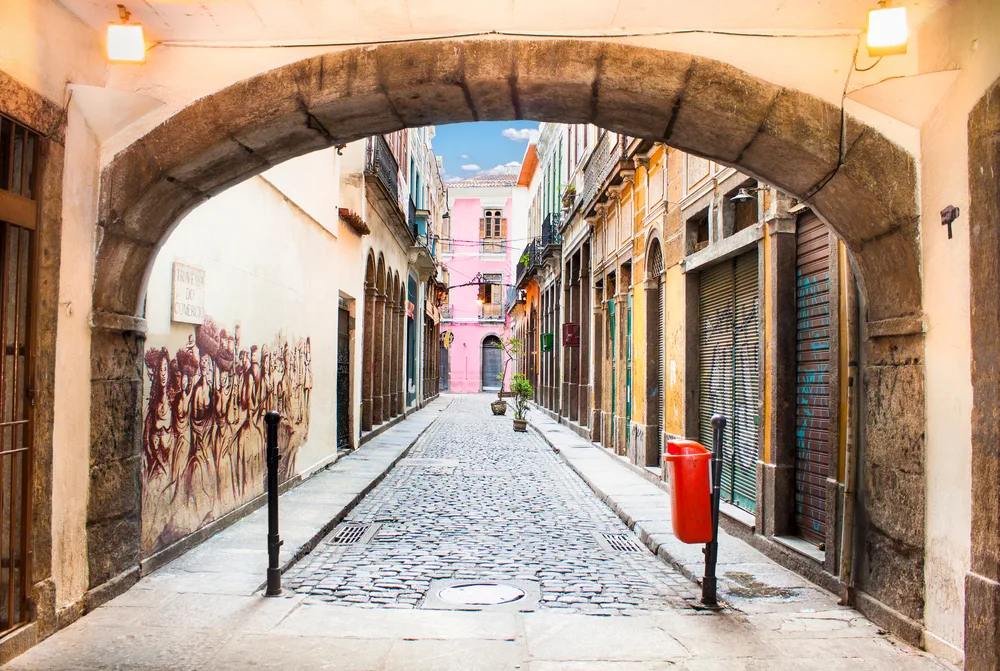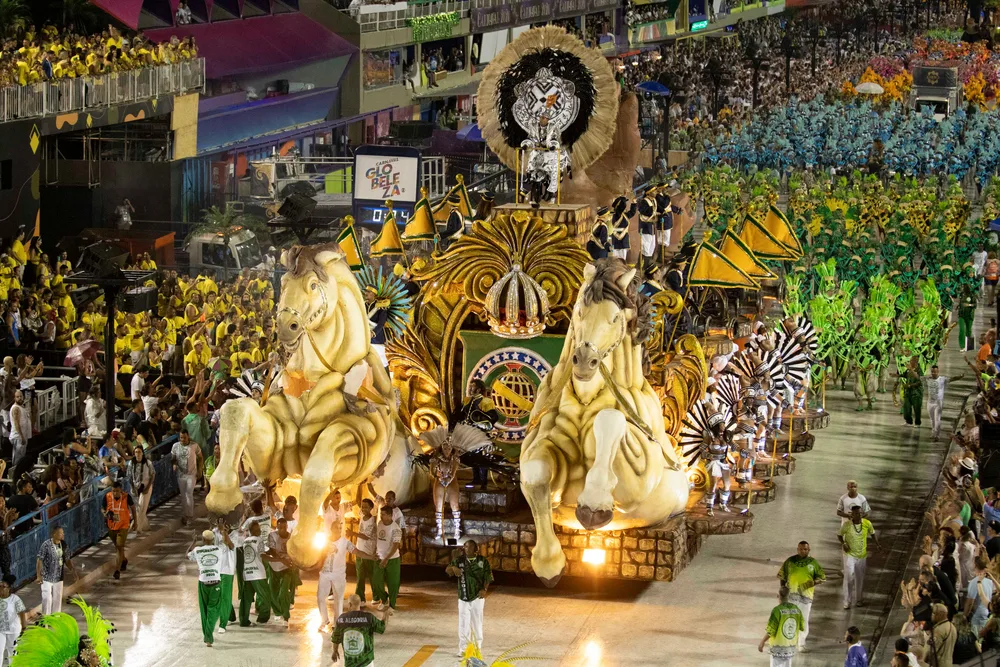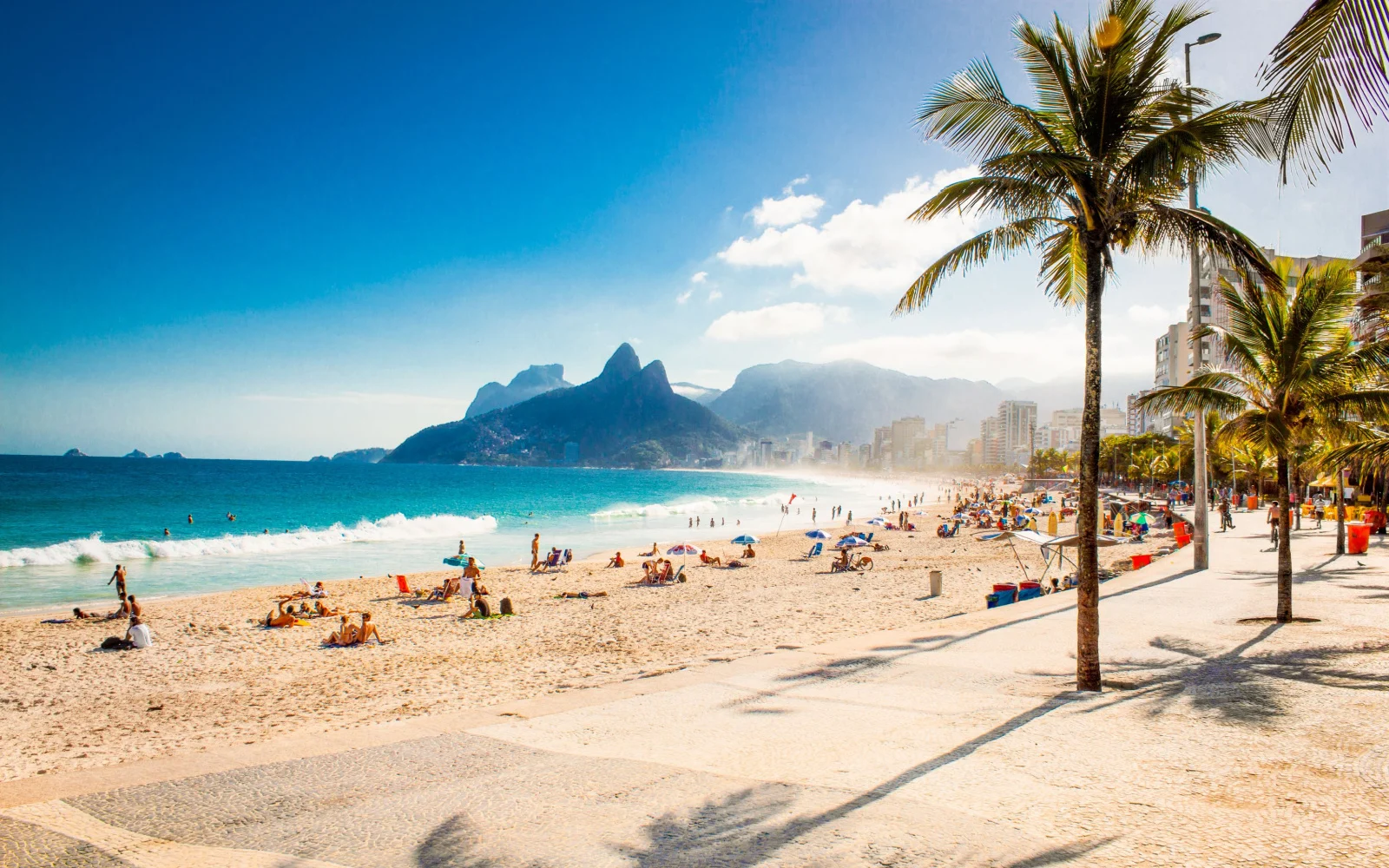What's the best time to visit Rio de Janeiro?
The best time to visit Rio de Janeiro is from April to June and September to late November. During these months, you’ll experience pleasant weather, fewer crowds, and lower prices. If you’re interested in Carnaval, it’s a unique experience, but be prepared for high prices and large crowds.
As one of Brazil’s most famous destinations, Rio de Janeiro attracts tourists from all over the Americas, Europe, and the world. With world-class hotels and stunning beaches, this tropical city is a paradise for budget and luxury travelers alike. But when’s the best time to visit Rio de Janeiro? Find out below.
Overall Best Time to Visit Rio de Janeiro

RIO DE JANEIRO, MARCH 3: Tourists are happy to see the first sunset after a week of rain and thunderstorms on the Corcovado Hill – march 3, 2013 in Rio de Janeiro, Brazil/Ksenia Ragozina/Shutterstock
The overall best time to visit Rio de Janeiro is between September to October, April to June, and around Carnaval time.
Remember, Rio de Janeiro is below the equator. That means that if you’re coming from Europe or the United States, the weather patterns will be the opposite of what you’re used to. December to March is summer, not winter, and the weather is the hottest.
From December to March, the weather will be hot, and there will also be quite a bit of rain, as the summer season is also the rainy season.
December and January are often the rainiest months, and there can sometimes be torrential rains that flood the streets. Still, it’s the most popular time to visit, so prices increase, and the beaches have crowds.
However, you’ll enjoy fewer crowds and beautiful weather from September to October, with little rainfall and sunny, warm days. The nights will be cool, but they won’t be cold like in July and August.
Since the skies will be mostly clear, you will be able to see the most amazing views from Sugarloaf Mountain and Christ the Redeemer, as well as other spots you choose to go to.
You can also sunbathe on the beaches of Rio, walk around and explore the city, or take a boat tour. The same applies to the period of April to June. It’s not too hot and not too cold, and there is little rainfall. You won’t be stuck inside or have to endure crowded beaches.
Accommodation is cheaper, simply because fewer people are going there, as people don’t have time off. If you plan on visiting for Carnaval, you’ll need to plan in advance.
It often falls in February, but since it’s dependent on Lent, which is dependent on the liturgical calendar, the exact date varies from year to year. It starts on the Friday before Ash Wednesday, although some people may begin celebrating even earlier.
Note that finding accommodation can be difficult during Carnaval, as there are so many tourists coming not only from foreign countries but from all over Brazil. It’s advisable to book in advance.
You should also book tickets in advance. While you can join any street festivity for free, some events require entry tickets. You can see updated dates for Carnaval and buy tickets on RioCarnaval.org.
Cheapest Time to Visit Rio de Janeiro

Rio de Janeiro/Brazil – August 17th 2019: Aerial View from the Top of Sugar Loaf Mountain (Pão de Açúcar) and the famous Cable Car (Bondinho) overlooking the City and the Mountain Range of Rio/Antonio Salaverry/Shutterstock
The cheapest time to visit Rio de Janeiro is between April and June and once again from September to the end of November.
Remember, the most popular time to visit Rio is from December to March. Outside that period, the prices of accommodation fall drastically, as many hotels, hostels, and Airbnb owners are desperate for guests.
Similarly, there is less demand for flights to Rio de Janeiro, so airfare costs also drop. The exception is in July and August, when it is summer vacation in the United States and Europe.
During those months, you can expect to see more tourists than usual, despite it being a little chilly, as many people simply have free time then. There will be crowds, and the prices of flights and accommodation will increase significantly.
Note that Rio de Janeiro is not a cheap place to visit, so it’s essential to plan accordingly. While the price of accommodation skyrockets during Carnaval, it’s not nearly as cheap as in neighboring countries like Colombia or Peru.
In general, budget travelers find the costs of food, accommodation, transport, and other expenses in Brazil surprising. Expect to pay $5-10 for a simple meal.
That’s if you are eating from local eateries that locals frequent. You can expect to pay a lot more if you eat at hotels, beachfront restaurants, or tourist-oriented restaurants. Accommodation can also vary considerably, depending on which area you stay in.
If you are on a budget, I recommend going March-April or October-November. During those times, the weather is still relatively good, but you won’t have to deal with the inflated prices of the high season.
Least Busy Time to Visit Rio de Janeiro

Aleksandar Todorovic/Shutterstock
The least busy times to visit Rio de Janeiro are between March and June and between September and late November.
December gets busy, as the weather is beautiful, and many people are off for the holidays. The absolute most active time, though, is during Carnaval, when hundreds of thousands of people flock to Rio specifically for Carnaval.
Rio is really crazy during Carnaval, so don’t expect a nice quiet time. The beaches will be full of people, and many streets will be full of people dancing, drinking, and just having a good time.
You can expect around two million people to show up to the festivities every day! If you are trying to avoid crowds, do not come during Carnaval. While it’s a once-in-a-lifetime experience, it’s not for everyone.
Remember that with crowds, the risk of crime increases. With so many people on the streets, pickpockets will be out, looking to take advantage of drunk and unsuspecting tourists. There may also be bag snatchers and even armed muggers.
Another busy time to visit Rio de Janeiro is in July and August, when it’s summer in the United States. If you want to avoid crowds, avoid those two months and go in the months immediately before or after them.
Worst Time to Visit Rio de Janeiro

Marianna Ianovska/Shutterstock
The worst time to visit Rio de Janeiro is in July and August. July to August is winter time in Rio de Janeiro, so it can get pretty chilly at night.
You might need a jacket, and it won’t be as easy to enjoy pleasant sunsets on the beach, depending on the day. While Rio de Janeiro doesn’t get as cold as São Paulo, and the weather is still pretty nice (it’s nothing like winter in the United States), it’s not optimal.
However, because it’s summertime in the United States and Europe, it’s peak vacation time. People flock to Rio de Janeiro from all over the Northern Hemisphere, so things get hectic. Finding a pleasant, quiet spot on the beach can be hard.
Rio de Janeiro by Month: Climate & Activities

Rio, Brazil – February 21, 2020: parade of the samba school Academicos do Cubango at the Marques de Sapucai Sambodromo/Celso Pupo/Shutterstock
Still unsure about the best time to visit Rio de Janeiro? Take a look at our summary of the weather and climate by month below:
January
January in Rio de Janeiro, with temperatures typically between 76 to 89°F (24 to 32°C), is lively and bustling. It’s a perfect time for sunbathing at iconic beaches like Copacabana and Ipanema, exploring the Tijuca National Park, and experiencing the excitement leading up to the Carnival.
February
February continues with the city’s summer vibrancy, ideal for experiencing the world-famous Rio Carnival, an explosion of color, music, and dance, enjoying outdoor dining and nightlife in Lapa, and taking cable car rides to Sugarloaf Mountain for stunning views.
March
As the summer starts to wind down in March, with temperatures from 75 to 88°F (24 to 31°C), enjoy the city’s vibrant street parties, visit the Christ the Redeemer statue, and explore the colorful Santa Teresa neighborhood.
April
April’s milder weather, with temperatures between 73 to 84°F (23 to 29°C), invites you to the Rio Boat Show, exploring the cultural landmarks like the Museu do Amanhã, and enjoying the less crowded beaches.
May
May brings cooler and more pleasant days, from 69 to 79°F (21 to 26°C), perfect for hiking in the Pedra da Gávea, visiting the Jardim Botânico, and exploring the artistic murals in the Lapa district.
June
June, ushering in the winter season with temperatures between 66 to 77°F (19 to 25°C), is ideal for attending the Rio de Janeiro International Film Festival, exploring indoor attractions like the Museum of Modern Art, and enjoying traditional Brazilian cuisine in the city’s many restaurants.
July
July’s mild climate, ranging from 64 to 76°F (18 to 24°C), invites you to experience the Festa Junina celebrations, enjoy whale watching off the coast, and explore the historic Forte de Copacabana.
August
In August, with temperatures of 65 to 76°F (18 to 24°C), take part in the Rio Gastronomy Festival, explore the nearby colonial town of Paraty, and enjoy scenic drives along the Costa Verde.
September
Welcoming spring, September, with temperatures from 66 to 77°F (19 to 25°C), is perfect for attending the Rock in Rio music festival, visiting the iconic Maracanã Stadium, and exploring the artsy neighborhood of Santa Teresa.
October
October’s warmer days, from 68 to 78°F (20 to 26°C), are ideal for enjoying the outdoor markets like the Feira de São Cristóvão, relaxing in the Parque Lage, and experiencing the nightlife in the vibrant neighborhoods of Botafogo and Ipanema.
November
November, as summer approaches, temperatures from 70 to 80°F (21 to 27°C), is a time for enjoying the beach life, exploring the Rio Antigo Fair for antiques and crafts, and taking part in the vibrant Gay Pride Parade.
December
December brings summer back in full swing, with temperatures ranging from 74 to 85°F (23 to 30°C). Celebrate the festive season with New Year’s Eve celebrations at Copacabana Beach, enjoy outdoor concerts and events, and experience the lively spirit of Rio during the holidays.
Frequently Asked Questions

Jefferson Bernardes/Shutterstock
Do you still have questions about visiting Rio de Janeiro? Here are answers to some of the most common questions we see from readers.
What is the rainiest month in Rio de Janeiro?
December tends to be the rainiest month in Rio, as it’s the heart of the rainy season. It’s also the hottest month. However, that doesn’t stop people from visiting. It won’t rain every day, and it won’t rain the whole day, so you’ll still have time to enjoy the beaches.
How many days should I spend in Rio?
We recommend staying a minimum of three days in Rio de Janeiro, as that allows you to explore the beaches on day one, Sugarloaf Mountain and the Botanical Gardens on day two, and other attractions, like Christ the Redeemer and the colorful Selaron steps, on day three. If you can add another day or two, you certainly won’t regret it – you can even add a favela tour.
Is English widely spoken in Rio?
No. Attendants at the most famous tourist attractions, such as Sugarloaf Mountain and Christ the Redeemer, generally speak at least basic English and Spanish (due to the influx of tourists from other Latin American countries). However, most Brazilians don’t speak English, although you may be able to get by with Spanish, as the two languages are similar.
So, When’s the Best Time to Visit Rio de Janeiro?
The best time to visit Rio de Janeiro is between April to June and once again between September to late November. During those times, you’ll enjoy the best weather while avoiding crowds.
It will also be cheaper. If you want to see the Carnaval, though, you’ll have to brave the crowds and high prices. However, regardless of the time you visit, you’ll be welcomed by friendly locals, amazing food, and breathtaking scenery. Happy travels!



